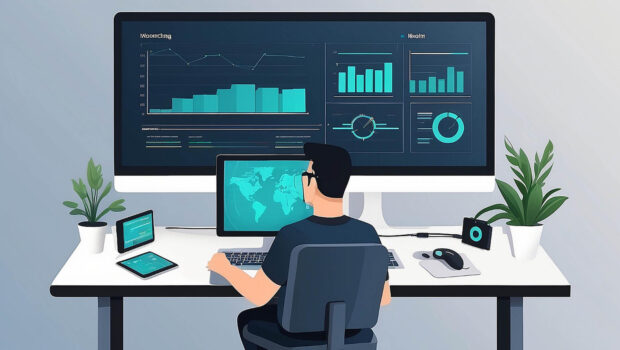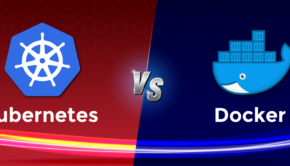Best Practices and Strategies for Monitoring Microservices
The requirement to deliver more features and dependability faster has transformed the software development process. As expected, this move has had an impact on software management, particularly monitoring systems. In this article, we’ll look at the drastic adjustments required to effectively monitor your microservices in production.
Monitoring is an essential component of microservices control systems, as the more complex your software becomes, the more difficult it is to comprehend its performance and solve issues. Given the enormous changes in software delivery, monitoring requires a complete revamp to function well in a microservice environment.
What is Microservices Monitoring?
Microservices is a method of developing large-scale programs by breaking them down into modular components known as services. A microservices design allows each service to run independently and connect with both external users and other microservices. These services are coupled to give end-users the capabilities they need.
If an issue arises with one of the services, teams must be contacted as soon as possible so that necessary action can be taken. Microservices visualization or monitoring of all service components can be difficult, as it requires embedding observability into each service, enabling failure detection, centralized log collection, and the ability to extract metrics from logs to identify a variety of operational issues.
Why is It Important to Monitor Microservices?
In a microservices architecture, each service operates independently and interacts with both external users and other microservices. These services are bundled to give end customers the functionality they require.
If there is an issue with one of the services, teams must be notified as soon as possible in order to take appropriate action. They will need to know what occurred, why, when, and under what circumstances. This information allows us to swiftly determine the root problem and recover the faulty service.
Microservices Monitoring Challenges
Monitoring microservices setups presents a significant challenge in ensuring that all services and components work together to achieve high performance and a pleasant user experience. It is also difficult to assess how these services work and how they interact with one another and with the overall user experience.
Traditional monitoring solutions focus on either the infrastructure, individual software components, or overall operational performance. These tools are typically only moderately effective, but they may be sufficient for legacy systems with a monolithic architecture. However, microservices deployments expose the limitations of traditional monitoring systems.
Best Practices and Strategies for Monitoring Microservices
To guarantee successful monitoring, system architects must choose a set of key indicators that serve as a baseline for the system’s overall health, such as acceptable latency and call failure rate. Here are some best practices and strategies for monitoring microservices:
Monitor Containers
Containers are a key component of microservices. Their mobility, speed, and isolation make them indispensable throughout the development process. However, because containers are “black boxes,” monitoring and troubleshooting may be more difficult. DevOps requires not only the knowledge of containers but also a thorough understanding of them.
Service Performance Monitoring
To automate software deployment for containerized applications, DevOps teams utilize orchestration solutions like Kubernetes, which take an application’s logical blueprint and deliver it as a group of containers. Developers use Kubernetes to define microservices and monitor the status of deployed services. DevOps teams should set alerts to focus on attributes that are closely related to the service experience. These notifications can notify operational staff right away if there is an issue with the application or its users.
Streamline Metrics, Traces, and Logs Into a Single Event
Observability is built on three pillars: traces, metrics, and logs. To ensure that you can monitor every part of your microservices-based app, make it as observable as possible. One of the first tasks is to gather all relevant logs, metrics, and traces and combine them into a single event stream for simpler processing. This data will not only assist you in monitoring and recognizing current difficulties but will also allow you to detect trends and patterns that can forecast when an issue will develop in the future.
Prioritize Anomaly Detection
Anomaly detection in microservices monitoring is critical to ensuring system reliability and satisfaction for users. Detecting abnormalities in system behavior or performance early allows you to fix issues before they become major problems that impair user experience or system stability.
Integrate Monitoring Into Your Company Framework
When companies shift to microservices, they frequently restructure their teams in a microservices-compliant structure. These small, dispersed teams have extensive control over the languages they use, how mistakes are addressed, and even operational responsibilities. Monitoring should also be in line with this structure. A microservices monitoring solution should enable individual teams to create their own alarms, metrics, and dashboards while also providing a consolidated view of the system for all teams.
Conclusion
Monitoring a traditional client-server application was confined to its infrastructure, while monitoring modern apps begins with analyzing their end-users’ digital experiences and tracking the service quality of the supporting microservices. The issue of monitoring a microservices-based application is the effort required to navigate the massive volume of data generated and tame its dynamic complexity.
Servers, containers, load balancers, databases, and other system components have short lifespans and generate a constant stream of time-series data and log files. The ideal way to monitor a microservice is to consider it as a black box, relying on service latency and error rate to obscure its inner complexity. Both of these indicators are perfect for alarming because they are straightforward to understand and apply to both microservices and complete software applications.
Cover Image: Freepik













